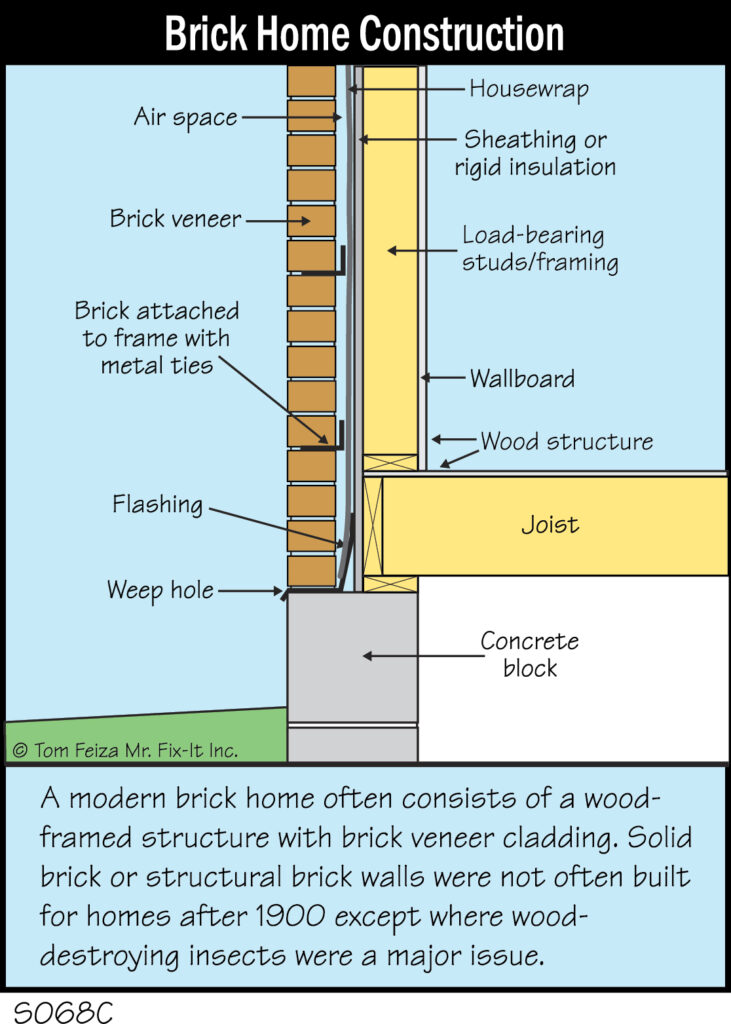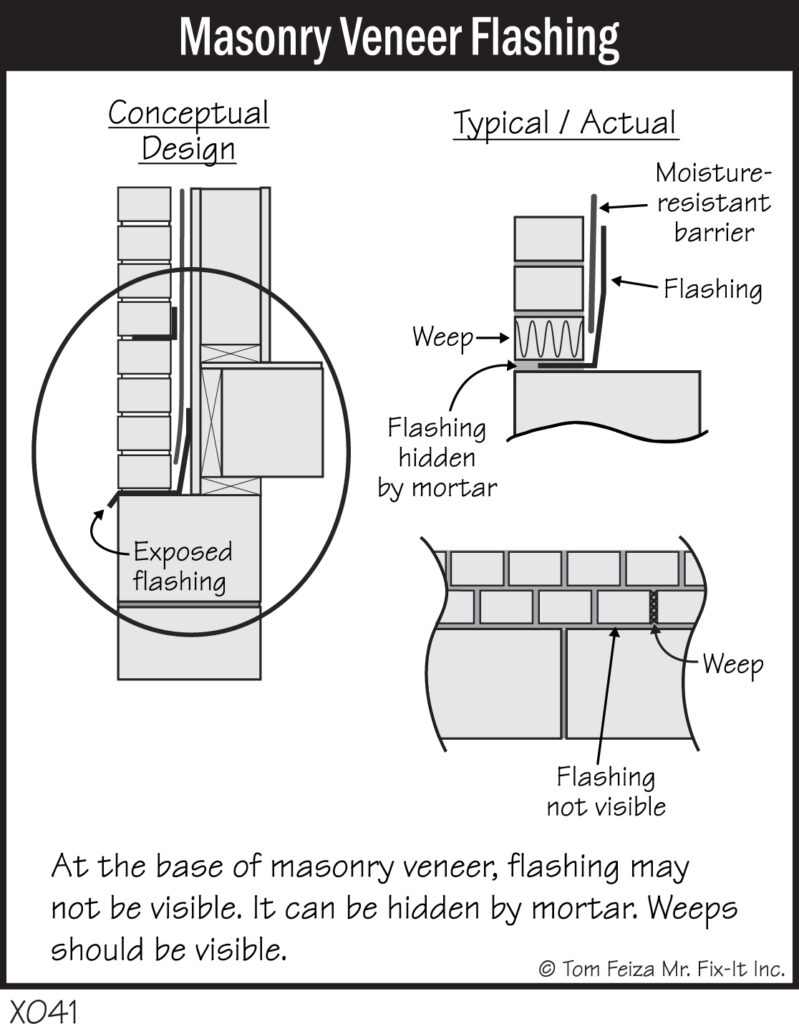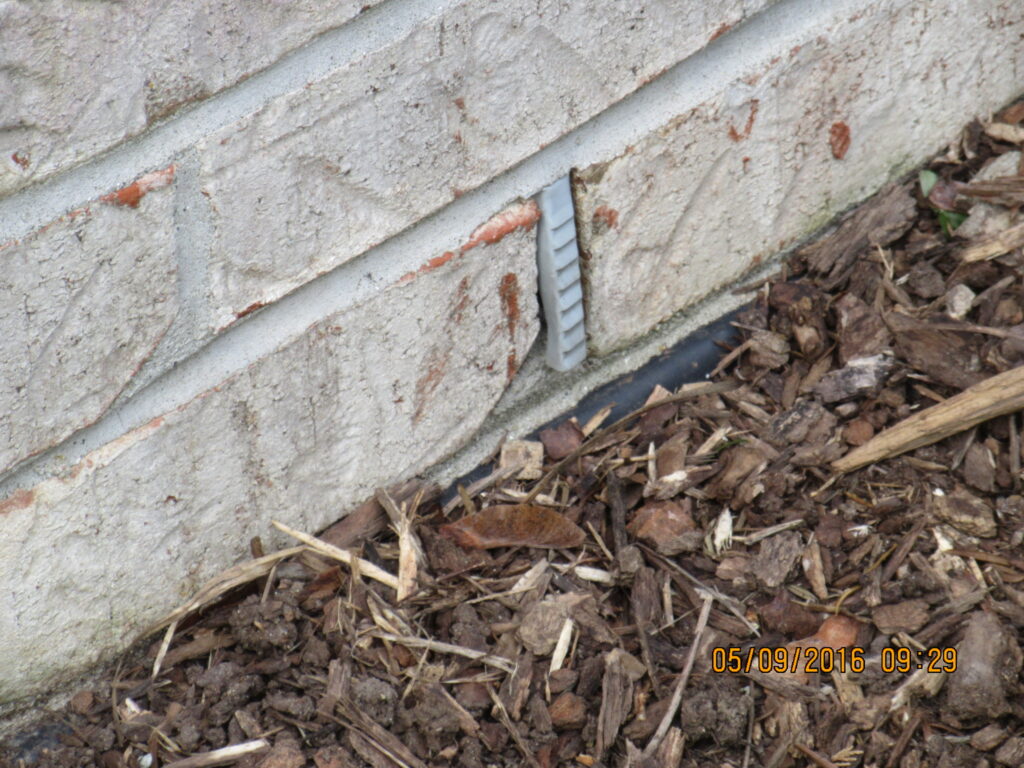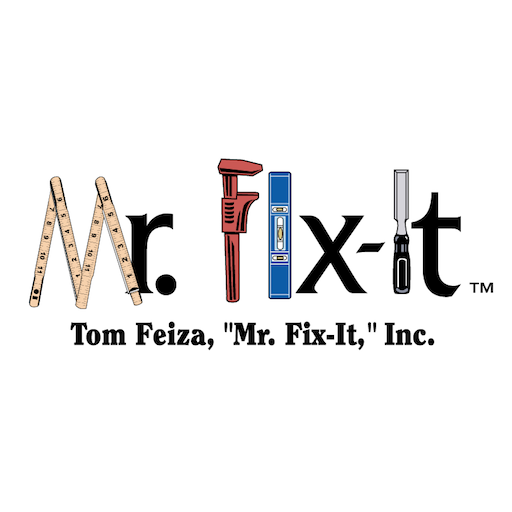By Tom Feiza, Mr. Fix-It, Inc., HowToOperateYourHome.com

All siding leaks – yes, even real brick veneer. How should brick veneer be properly drained to prevent water damage to the wall assembly?
Brick and mortar leaks
Water will flow through exterior brick veneer and can damage the structure behind and below the brick. For many years, structures have been protected by drainage planes, flashing, and water-resistant barriers. In older construction, wide overhangs often provided this protection.
Illustration S068C shows general brick veneer construction. Note the air space behind the brick to drain water and stop capillary action. The wood frame is covered with a water-resistant barrier. Flashing directs water to drain over the foundation. Thin metal strips “tie” the brick to the wall for horizontal support.

Details of brick water management
Illustration X043 shows additional water-management details. There must be a gap of at least 1 inch for drainage. The water-resistant barrier can be traditional tar paper, housewrap, or a specialty product. The weep shown here is an open mortar joint. There should be an insect-resistant material covering – not just a hole. An optional drainage mesh is also shown.

What can you expect to see?
In residential construction, flashing and weeps are often not visible. Illustration X041 shows a typical situation in which flashing is buried in the mortar joint. Who knows why? Perhaps masons do this to hide the “ugly” flashing. During an inspection, you will often find that the lower brick is buried beneath landscaping; you’ll have no idea whether there are flashings. You certainly can’t see into the wall structure.

Flashing that’s visible in residential construction might come as a surprise (Photo 1). If you look closely, you can see a small round weep hole just above the dark flashing. An open mortar joint and covering for a weep is even less common (Photo 2).

The takeaway

Real brick veneer should have flashings and weeps. Don’t confuse real brick or stone veneer with an adhered stone or brick – a synthetic stucco type of assembly.
If you can’t see a drainage system, state that in your report and list the limitations. Note whether there is insufficient clearance from the structure to soil. Note any visible water damage that requires further investigation.

